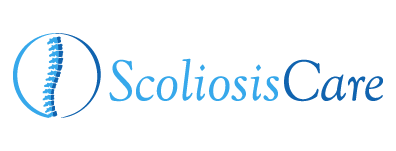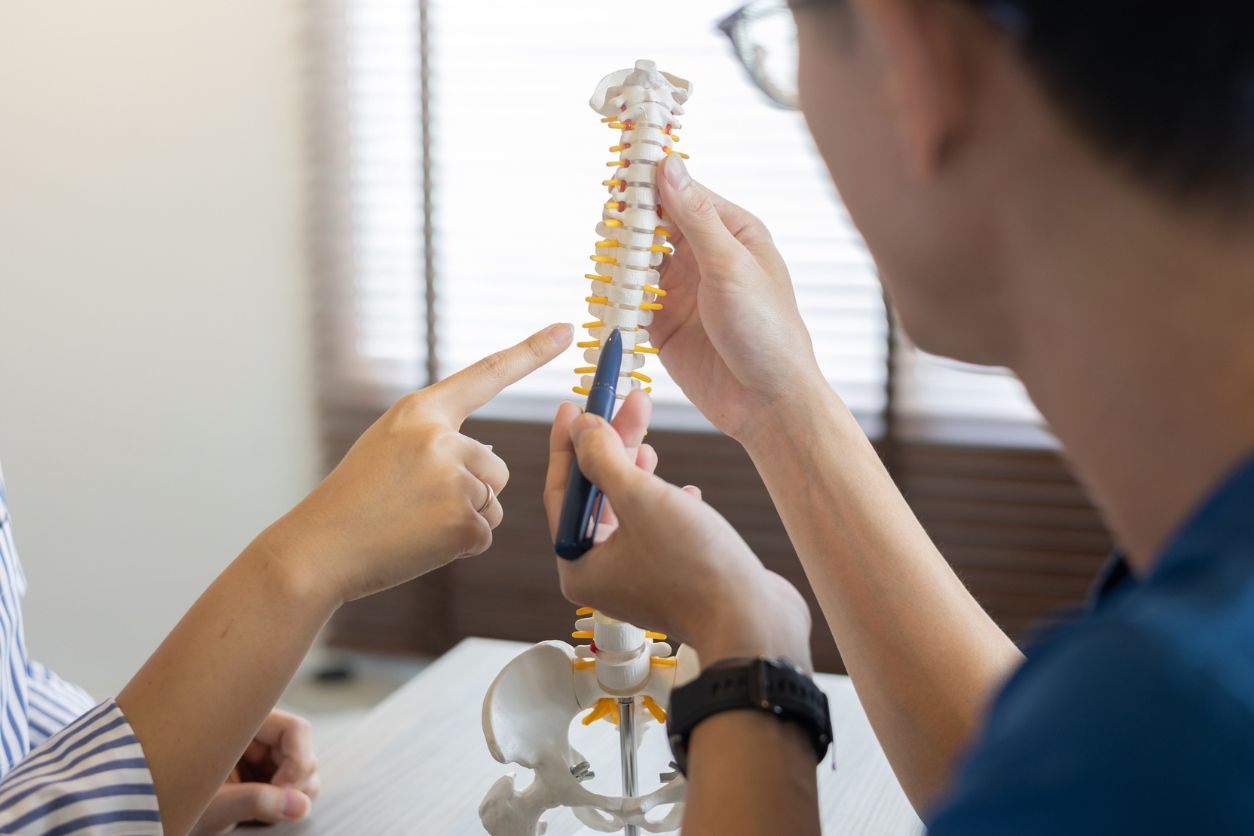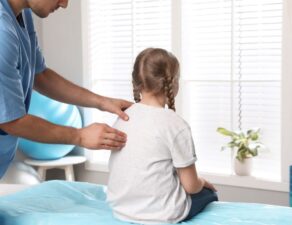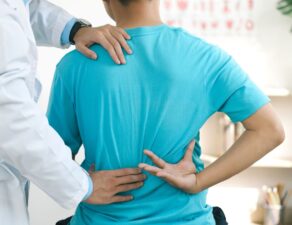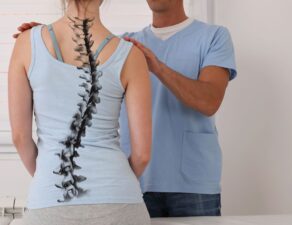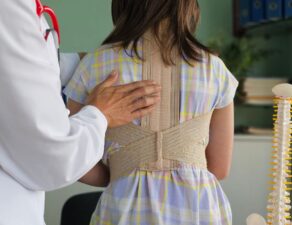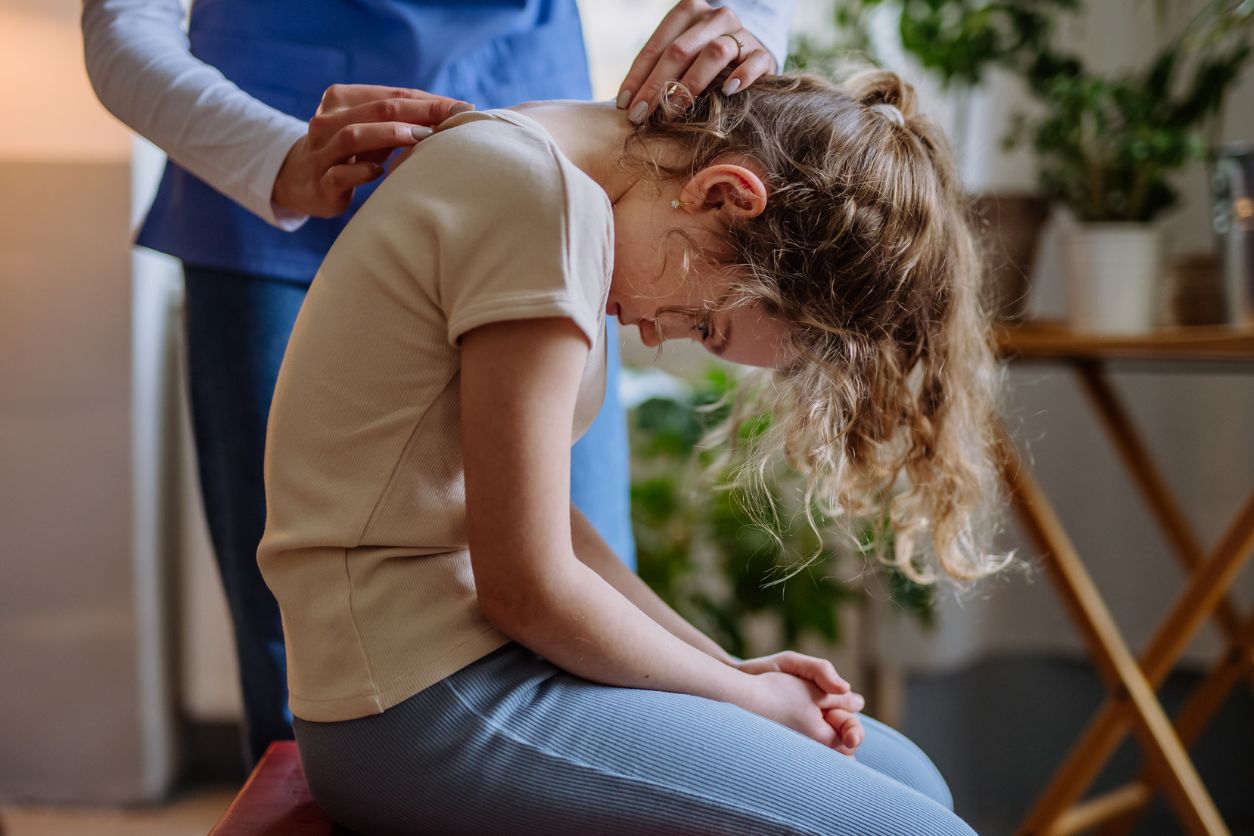
Spine conditions can be complex, especially when multiple curvatures are involved. One condition that combines both forward rounding and sideways bending of the spine is called kyphoscoliosis. It’s less commonly discussed than scoliosis alone, but it can have a serious impact on posture, mobility, and in more severe cases, lung function.
At Scoliosis Care, Dr. David Siambanes evaluates and treats patients with kyphoscoliosis using a personalized, thoughtful approach. Whether the condition is mild or severe, understanding what it is and how it’s managed can help patients and their families take a more active role in their care.
What Is Kyphoscoliosis?
Kyphoscoliosis is a spinal deformity that includes both:
- Kyphosis: an exaggerated forward rounding of the upper back, often seen as a hunched or slouched posture
- Scoliosis: a sideways curvature of the spine, often shaped like a “C” or “S” when viewed on an X-ray
When these two curvatures occur together, they cause a three-dimensional distortion of the spine. The result is not only a visible change in posture, but also a shift in how the body carries weight, moves, and, even in some cases, breathes.
Kyphoscoliosis can affect individuals of any age, though its causes and symptoms may vary widely depending on the patient’s history and overall health.
What Causes Kyphoscoliosis?
There isn’t one single cause of kyphoscoliosis. Instead, several different conditions and risk factors can contribute to its development.
Common causes of kyphoscoliosis include:
- Congenital spine malformations, which are present at birth due to improper development of the vertebrae
- Neuromuscular disorders, such as cerebral palsy, muscular dystrophy, or spina bifida, which weaken the muscles that support the spine
- Idiopathic scoliosis, where no known cause is identified, typically beginning in adolescence
- Degenerative changes from aging, arthritis, or osteoporosis in older adults
- Trauma or injury, such as fractures or damage to spinal structures, can lead to curve progression over time
- Post-surgical complications: In some cases, previous spine surgeries may contribute to curve imbalances
Because kyphoscoliosis can have such a wide range of origins, proper diagnosis involves a detailed clinical and imaging evaluation.
Kyphoscoliosis Symptoms to Watch For
Kyphoscoliosis symptoms vary from person to person. For some, the condition is mild and does not cause pain or major limitations. For others, especially in cases of severe curvature, the symptoms can significantly impact daily life.
Common symptoms of kyphoscoliosis include:
- A visibly hunched or twisted posture
- Uneven shoulders, waist, or hips
- Back pain or fatigue, especially after standing or walking
- Shortness of breath or reduced lung capacity in more advanced cases
- Muscle tightness or spasms along the back
- Difficulty with balance or coordination
In children and teens, parents may notice that their child’s posture is changing over time or that their clothes are fitting unevenly.
In adults, symptoms are often more physical and include pain, stiffness, or shortness of breath.
How Kyphoscoliosis Is Diagnosed
Diagnosing kyphoscoliosis starts with a detailed physical exam, where a physician checks for postural imbalances, spinal alignment, and signs of discomfort. However, the real confirmation comes from imaging, most commonly:
- Standing spinal X-rays to measure both kyphotic (forward) and scoliotic (lateral) curvatures
- MRI or CT scans if nerve involvement, spinal cord compression, or underlying structural abnormalities are suspected
Measurement tools like the Cobb angle help assess the degree of the curves and give a full picture of the spine’s condition.
At Scoliosis Care, Dr. Siambanes takes the time to walk patients and their families through their imaging results, using clear explanations to outline the best path forward.
Treatment Options for Kyphoscoliosis
Treatment for kyphoscoliosis depends on the severity of the curve, the cause of the condition, and the symptoms a patient is experiencing.
Non-surgical Treatment Options
- Physical therapy: Focused on improving core strength, spinal mobility, and postural alignment
- Bracing: Often used in adolescents or young adults with moderate curvatures to slow progression
- Pain management: Through activity modifications, anti-inflammatory medications, or injections
In many cases, non-surgical treatment can provide relief and prevent the curve from worsening, especially when started early.
Surgical Treatment May Be Necessary When:
- The spinal curve is severe (typically more than 70–80 degrees)
- Non-surgical methods have failed
- Lung or heart function is compromised
- Pain is persistent and disabling
Surgery often involves spinal fusion using rods, screws, and bone grafts to correct and stabilize the spine. Dr. Siambanes has extensive experience in these complex procedures and works with each patient to evaluate the risks, benefits, and timing of surgical intervention.
Living with Kyphoscoliosis: Ongoing Monitoring and Support
Even after treatment, kyphoscoliosis requires ongoing care. Patients benefit from:
- Regular follow-up visits
- Repeat imaging to monitor the spine over time
- Continued physical therapy or exercise-based maintenance plans
- Lifestyle modifications to protect spinal health and prevent complications
At Scoliosis Care, Dr. Siambanes and his team work closely with each patient to develop a plan that supports not just the spine but the whole person.
Schedule a Consultation with Dr. Siambanes
If you or your child has been diagnosed with kyphoscoliosis, or if you’ve noticed changes in posture, back pain, or breathing, it’s important to get a full evaluation. Early diagnosis leads to better outcomes and more conservative treatment options.
Dr. David Siambanes brings decades of experience and a compassionate, individualized approach to scoliosis and spinal deformity care. Request a consultation today and get the clarity and support you deserve.
